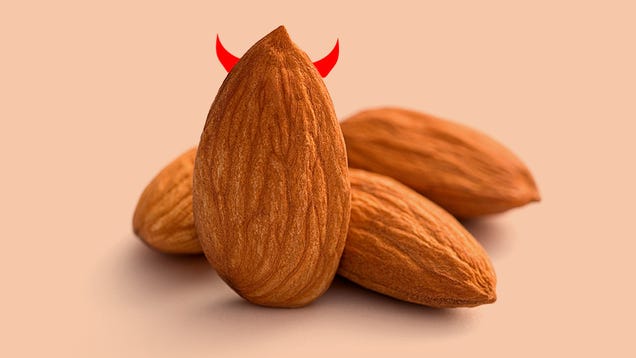It's the second post and today I'm going to touch on how food wastage also means water wastage. Water scarcity is an equally important environmental concern. Worldwide, 1.1 billion people have no access to water and 2.7 billion of people find water scarce for at least one month of the year. It is crucial to therefore minimise food wastage as much as possible, so as not to contribute to unnecessary water wastage.
So according to a UN report, the amount of water wasted when the food produced are not eaten is equivalent to the entire annual flow of the Volga river!
As we all know, water is not a finite resource and is actually more important than food. The lack of water kills you faster than the lack of food! People often take food for granted, and hence are unaware of the amount of water that goes into food production and transportation. (read: importance of water - if you're interested).
In California,
One gallon of water (=3.78541178 liters) is needed to grow a single almond nut!!!!!
Shocking, isn't it? That's equivalent to using 10% of California's water supply just for these tiny nuts. When you eat a handful of almonds. about 23 almonds, that would mean that 87 liters of water is required for its production.
However when you take a step back and look at the bigger picture, this amount of water is insignificant when food production is concerned. Up to 200-1000 gallons of water is utilized to grow only nine daily servings of fruits and vegetables recommended by the USDA (for the 2000 calorie per day American diet). Meat or any dairy products, which can easily double that number, have yet to be included into the staggering amount of water needed.
(from the book Food Industry Wastes: Assessment and Recuperation of Commodities)
Linking back to the main point, the water footprint of food wastage is so much more than just 23 gallons of water for producing a handful of almonds. Bottom line is, stop wasting food~
In an article, The Center for Science in the Public Interest (CSPI) mentioned a few key points. They are an organisation which provides consumers with current, useful information about health and well-being.
- demand for water (for irrigation, drinking purposes etc) can outstrip supply, resulting in water shortages
- farms growing feed grains, cotton, raising livestock are using up groundwater and surface water permanently
- producing meat requires huge amounts of water. to produce 1 pound of animal protein, an average 1,000 gallons of water needed
- irrigating feed crops and raising livestock consume over half of all freshwater. in contrast, domestic uses of water only use less than one-tenth as much water as agriculture
- overall rate at which water is removed exceeds the rate of replenishment by as much as 21 billion gallons daily
Based on these points, it truly reflects the fact that water is limited and will run out one day. Of course, what I'm trying to bring across is not to stop people from eating what they want, but to be more aware of how much they are eating (or in this case - wasting). Yes, you can go ahead and order that beef if you like, but the important thing is to enjoy and finish it, and not let it go to waste!
I'm going to end off with a few more pictures to show you how much "hidden water" is actually used in the production of food. Hopefully the next time you're eating, you'll be more conscious of finishing what you have on the plate :-)
References:
ALISSA WALKER. (2015) Seriously, stop demonizing almonds. [Online] Available from: http://gizmodo.com/seriously-stop-demonizing-almonds-1696065939 [Accessed: 22/8/2015]
CENTER FOR SCIENCE IN THE PUBLIC INTEREST. (n.d) More and cleaner water. [Online] Available from: http://www.cspinet.org/EatingGreen/pdf/arguments4.pdf [Accessed: 22/8/2015]
NATIONAL GEOGRAPHIC. (2015) How reducing food waste could ease climate change. [Online] Available from: http://news.nationalgeographic.com/news/2015/01/150122-food-waste-climate-change-hunger/ [Accessed: 22/8/2015]
WATER SUPPLIES DEPARTMENT. (n.d) What is virtual water? [Online] Available from: http://www.waterconservation.hk/en/virtual.html [Accessed: 22/8/2015]
WORLD WILDLIFE FUND. (n.d) Water scarcity. [Online] Available from: http://www.worldwildlife.org/threats/water-scarcity [Accessed: 22/8/2015]





No comments:
Post a Comment